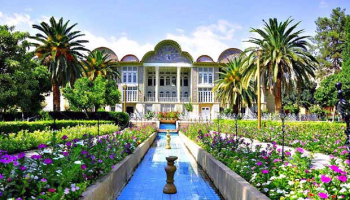Naqsh-e Jahan Square
Introduction and Pictures
Exploring the Historical Marvel of Naqsh-e Jahan Square: A Glimpse into the Heart of Isfahan
Naqsh-e Jahan Square, also known as Imam Square, stands as a testament to the rich cultural and architectural heritage of Iran. Nestled in the heart of Isfahan, this expansive square is not merely a physical space; it’s a historical canvas that unfolds the tales of the Safavid dynasty. With its grandeur, impressive structures, and vibrant atmosphere, Naqsh-e Jahan Square has become a captivating destination for travelers seeking a glimpse into Iran’s illustrious past. This essay will unravel the historical features of Naqsh-e Jahan Square, exploring its construction, geographical significance, and other elements that contribute to its status as a premier tourist attraction.
Constructed during the early 17th century, Naqsh-e Jahan Square was commissioned by Shah Abbas the Great, the influential ruler of the Safavid Empire. The square’s construction began in 1598 and was completed in 1629, marking it as one of the most ambitious urban projects of the Safavid era. The name “Naqsh-e Jahan” translates to “Image of the World,” reflecting the square’s symbolic importance as the epicenter of political, social, and commercial life during the Safavid period.
Geographically, Naqsh-e Jahan Square is strategically positioned in the heart of Isfahan, Iran’s third-largest city. The square covers an area of approximately 89,600 square meters, making it one of the largest historical squares globally. Surrounded by architectural masterpieces, the square boasts a unique synthesis of Persian and Islamic architecture, creating a harmonious blend of aesthetics and functionality.
The square is flanked by four prominent structures, each contributing to the grandeur of Naqsh-e Jahan. On the eastern side stands the Shah Mosque, also known as Imam Mosque, a magnificent example of Persian Islamic architecture. Constructed with turquoise and blue tiles, the mosque’s intricate calligraphy and geometric patterns mesmerize visitors, reflecting the artistic achievements of the Safavid era.
Opposite the Shah Mosque is the Sheikh Lotfollah Mosque, renowned for its exquisite domed structure and intricate tilework. Unlike the Shah Mosque, Sheikh Lotfollah Mosque was not intended for public use; instead, it served as a private worship space for the royal family.
Flanking the northern side of the square is the Ali Qapu Palace, a six-story palace that once served as the Safavid royal residence. The palace’s elevated position provides a panoramic view of the square, making it an architectural marvel that combines practicality with aesthetic sophistication.
Completing the quartet of architectural wonders is the Qeysarie Gate, a grand entrance to the square adorned with a stunning portal. Historically, this gate served as the main entrance for tradesmen and caravans entering the square, adding a commercial dimension to Naqsh-e Jahan.
The square itself is paved with intricate patterns, creating a mesmerizing carpet-like effect that enhances its visual appeal. In the center of Naqsh-e Jahan Square is a large pool, historically used for ablutions and providing a reflective surface that enhances the grandeur of the surrounding structures.
Naqsh-e Jahan Square’s significance extends beyond its architectural brilliance. It served as a hub for various cultural and recreational activities during the Safavid period, hosting polo games, festivals, and markets. The square’s role as a social and economic center underscored its importance in the daily life of Isfahan’s residents.
Over the centuries, Naqsh-e Jahan Square has witnessed changes in rulers, political landscapes, and societal norms. Despite these transformations, the square has retained its cultural and historical significance, earning recognition as a UNESCO World Heritage Site in 1979. Today, Naqsh-e Jahan Square continues to be a vibrant center, attracting visitors from around the world who seek to immerse themselves in the splendor of Iran’s Safavid heritage.
In conclusion, Naqsh-e Jahan Square stands as a living testament to the grandeur and cultural richness of the Safavid era. Its historical features, including the Shah Mosque, Sheikh Lotfollah Mosque, Ali Qapu Palace, and Qeysarie Gate, collectively create an awe-inspiring ensemble that invites visitors to step back in time. As a symbol of artistic and architectural achievement, Naqsh-e Jahan Square remains a jewel in the heart of Isfahan, inviting travelers to explore its historical tapestry and experience the enduring legacy of Iran’s past.

